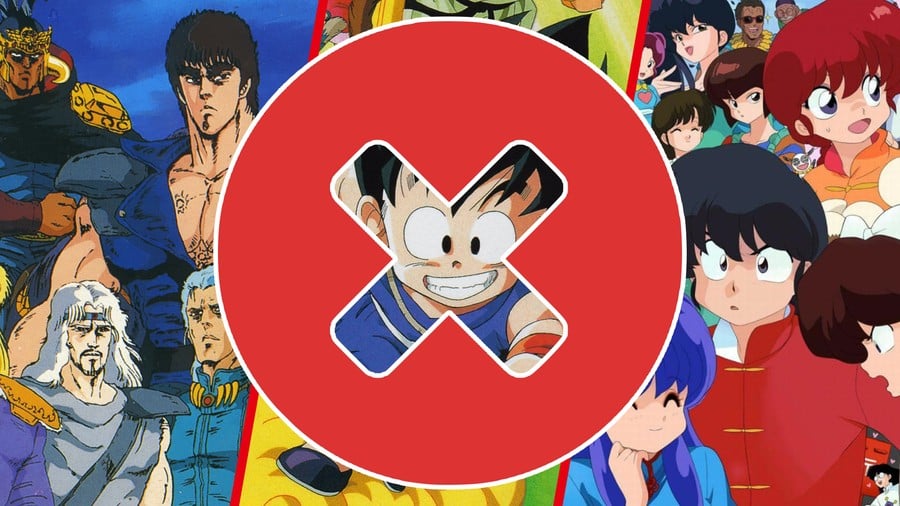
Japanese animation – or 'anime' as many call it – is huge business these days. While it is naturally most popular in its homeland, we've seen numerous anime properties cross over to the west and find the kind of success that is usually reserved for home-grown cartoons and media franchises. Series such as Attack on Titan, Dragon Ball, Berserk, Bleach, Naruto, One Piece, and Fullmetal Alchemist have all become genuine global hits, pulling in millions of fans away outside of Japan shores.
That Japanese animation has international respect is something that is worth celebrating; unlike in the west, where animation is still treated as somewhat childish by many, the Japanese treat it as a legitimate art form and many of the country's most commercially successful blockbuster movies are – as some unkind westerners would say – cartoons.
It's worth remembering that there once was a period when anything that looked even remotely Japanese was seen as a commercial risk
The rise in popularity of anime in the west has had a very welcome side-effect for gamers; we're now blessed with more anime games in the west than ever before, and titles such as Dragon Ball FighterZ, My Hero One's Justice and Naruto Shippuden: Ultimate Ninja Storm Trilogy are solid additions to the Switch's growing library – and that's not to mention the countless anime-style series, such as Steins;Gate, Zero Escape and many others – which have found a receptive fanbase in the west over the past few years.
However, while anime's influence and reach has expanded massively in recent times, it's worth remembering that there once was a period when anything that looked even remotely Japanese was seen as a commercial risk. Some publishers would try their hardest to limit the Japanese influence from the packaging of their games with all-new western-made artwork, others would go even further and completely change the in-game assets, totally removing all trace of the anime on which the game was originally based.
Of course, it wasn't always down to a matter of western tastes – oftentimes, publishers would remove Japanese licences simply because they weren't well-known in the west, and thereby avoid paying fees to the IP owner – but there was a definite trend at the time for masking the eastern origins of many titles.
Take a trip down memory lane as we look at some of the most notable examples from a time when anime was as good as outlawed.
Dragon Ball / Dragon Power (NES)
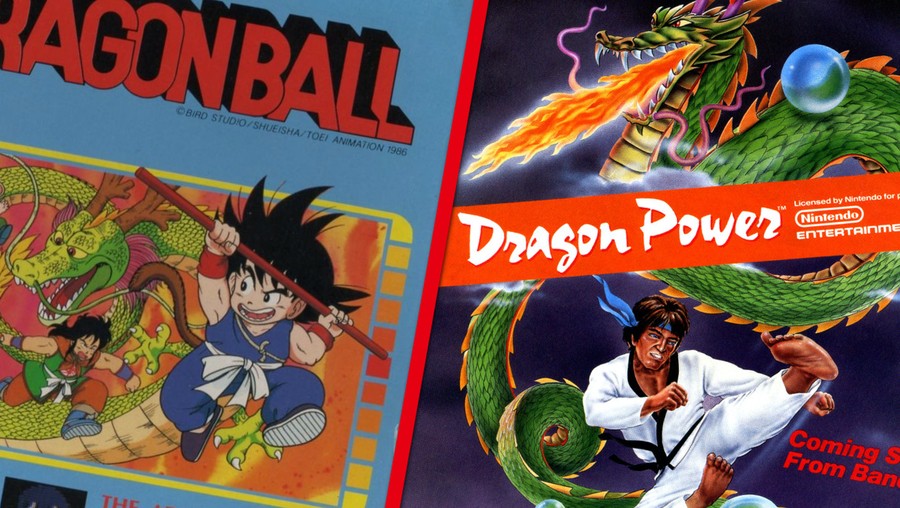
One of the earliest examples of an anime licence being totally ripped away from a video game is 1988's Dragon Power on the NES, which is based on the 1986 Famicom release Dragon Ball: Shenron no Nazo. The hero Goku was altered to look more like your typical '80s kung-fu dude, while the legendary Dragon Balls become less-exciting 'crystal' balls. There's also some infamous censorship afoot; in the Japanese original, Master Roshi gets a nose bleed when he gawps at Bulma's panties, but in the American version, he's got a fondness for Bulma's sandwiches. Because Dragon Ball was already popular in France, that region got a proper localised version of the game in 1990, entitled Dragon Ball: Le Secret du Dragon.
Fist of the North Star / Last Battle / Black Belt
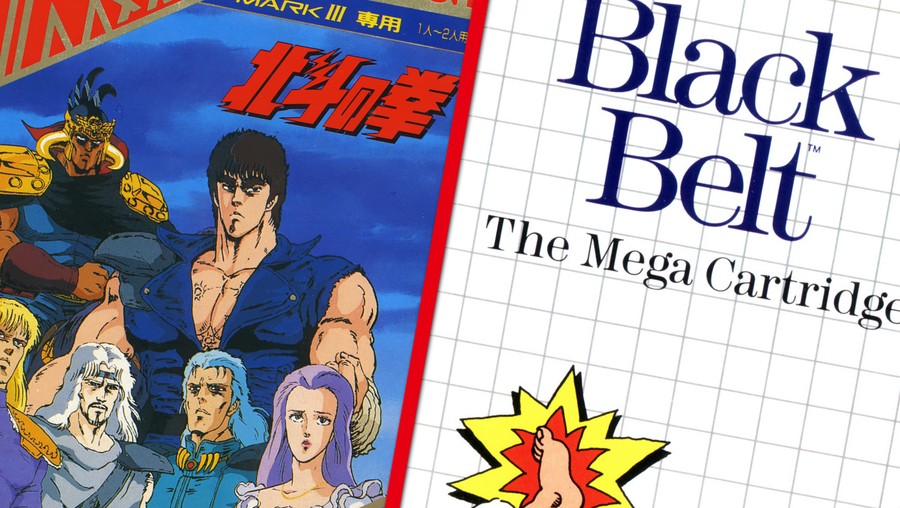
Fist of the North Star – or Hokuto no Ken, as it is known in Japan – is one of the true classics of Japanese manga and anime, having established itself during the '80s. We've seen video games based on the series since then, with Sega being one of the main licensees responsible. It produced a Fist of the North Star game for the Mark III console in 1986, and then ported it to the west under the name Black Belt, removing most of the references to the original series. It would follow this with 1989's Hokuto no Ken: Shin Seikimatsu Kyūseishu Densetsu on the Mega Drive, which made its way to the west as Last Battle. Again, the characters were mostly re-drawn to hide the link to Yoshiyuki "Buronson" Okamura's post-apocalyptic franchise, and the gore was toned down dramatically (no exploding heads for us westerners). Oddly, Last Battle was subsequently picked up for conversion to home computers by UK company Elite.
It's worth noting that while Sega changed its Fist of the North Star games to suit a western audience, we did see games cross over from Japan with the licence intact on the NES and Game Boy – presumably to cash-in on the western 1991 release of the 1986 Fist of the North Star movie by Streamline Pictures.
Tecmo Cup Soccer Game / Captain Tsubasa (NES)
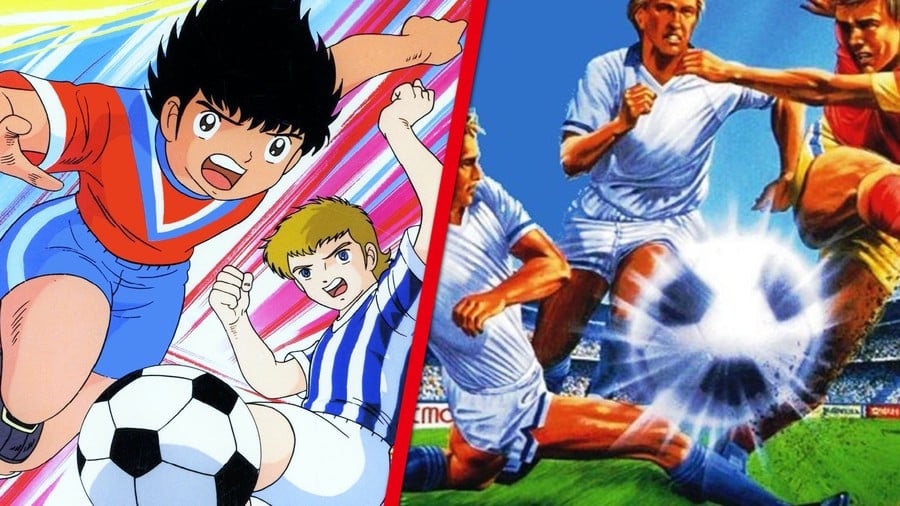
A soccer game with RPG elements was always going to be a hard-sell back in the NES days, so it's hardly surprising that Tecmo decided to strip away the Captain Tsubasa licence for the western release of its popular footy adventure. The Japanese version took elements from Yōichi Takahashi's famous manga and anime series, creating a game which moved away from the fast-paced action of most soccer sims and instead relied on a more cinematic, turn-by-turn view of the action. The western version retained this structure but removed all of the Captain Tsubasa characters and replaced them with generic footballers (the lead character, Tsubasa, becomes a blond-haired Superman lookalike called Robin Field, for example).
Burai Fighter (NES / Game Boy)
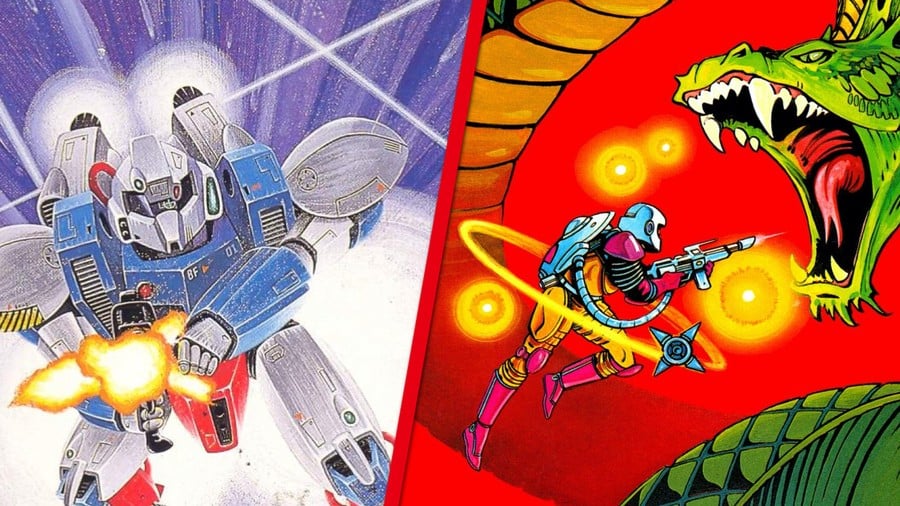
Like a great many Japanese games, Burai Fighter has a massive, Gundam-style mech on its front cover – a surefire way of getting Japanese kids interested in the game contained within, especially in the absence of an official anime licence. However, when the game was released in the west, the robot was supplanted by a generic space dude who looks like something out of Buck Rogers. Boo.
Power Blade / Power Blazer (NES)
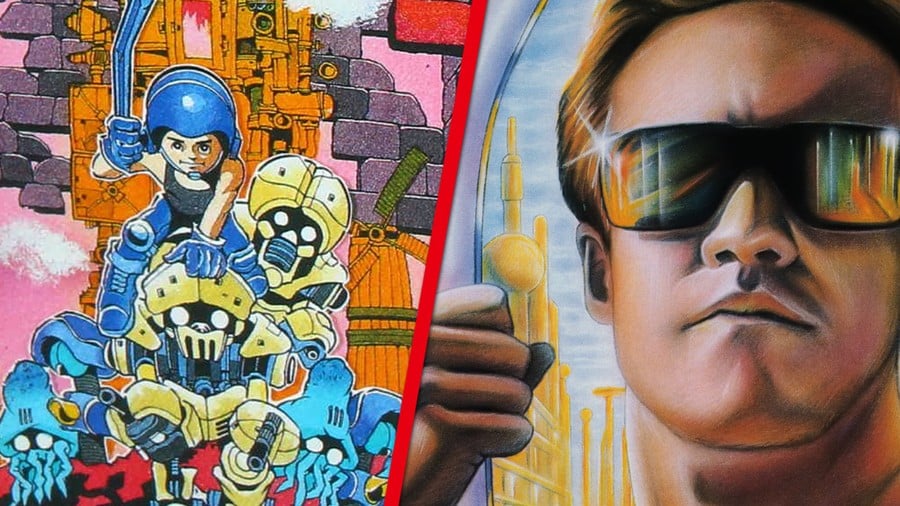
This Taito-made NES action platformer is a perfect example of how Japanese publishers re-shaped their games for western consumption. In the Japanese original – named Power Blazer – the main character is a cute, Mega Man-style cyborg, whereas the western edition features a muscle-bound, sunglasses-wearing Schwarzenegger lookalike (so close was the resemblance that cover artist Mike Winterbauer claims he was sent threatening letters by "a certain movie star's lawyers" until he pointed out that he had used his own face as a reference for the image). The game's stages were also changed and the controls were improved, so while Power Blade sports a cookie-cutter visual style that is clearly aimed at pleasing young fans of '80s Hollywood action movies, it does at least play better than its Japanese counterpart. Interestingly, Power Blade 2 was released in Japan under the title Captain Saver and shared the same visual style as the western version, complete with Arnie-style protagonist.
Zelda: Link's Awakening (Game Boy)
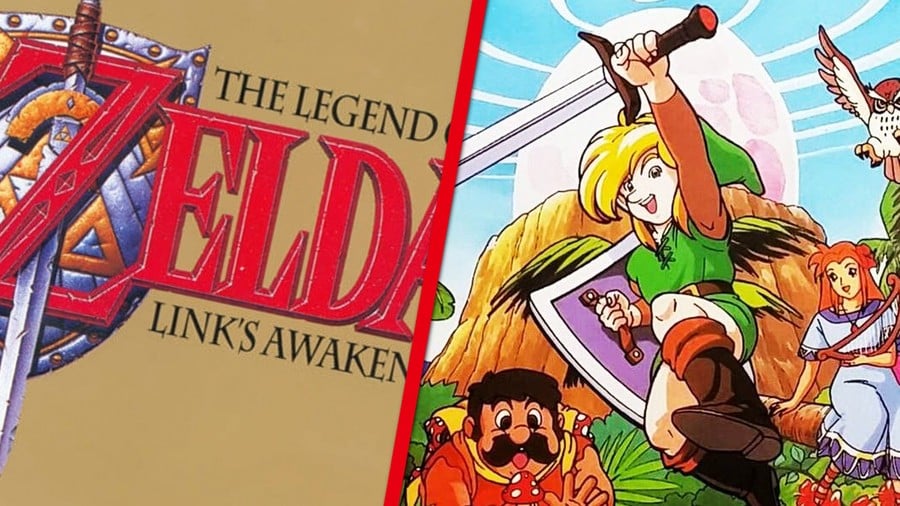
This is arguably a controversial inclusion, but one worth mentioning – Nintendo was pretty aggressive in removing any 'anime' elements from the covers of its Zelda titles. Right from the start, the cartoon-like illustrations seen on the Japanese versions of The Legend of Zelda, Zelda II: The Adventure of Link and The Legend of Zelda: A Link to the Past were all replaced by basic covers that didn't feature any character artwork whatsoever (although, to be fair to Nintendo, it would use the cartoon-like artwork in both the instruction manuals and promotional materials). Perhaps the most notable change was for Link's Awakening, which boasted a gloriously colourful anime-inspired cover for its Japanese release – a cover which was ditched in the west in favour of the trademark Zelda logo, complete with sword and shield. We imagine that many of you reading this will have a strong nostalgic connection with the western cover artwork – we don't blame you – but let's face it, the Japanese cover is superior.
Street Fighter II: The World Warrior (SNES)
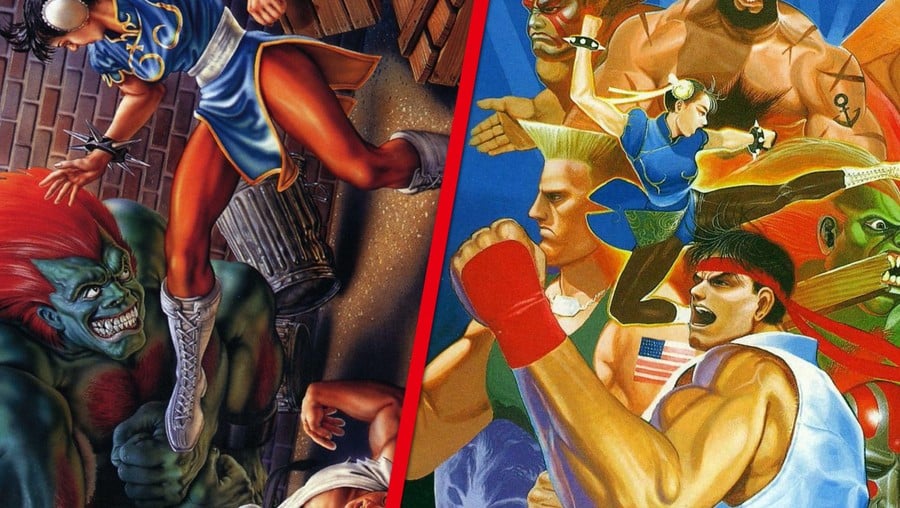
While this might not be as clear-cut a case as some of the others on this list, there's no denying that Capcom – like so many publishers in the '80s and '90s – took steps to lessen the "Japanese" look of their game covers. While the Japanese version of Street Fighter II featured a gorgeous piece of artwork by legendary illustrator Akira “Akiman” Yasuda – Capcom's go-to guy for box art at the time – the North American edition was graced with an all-new image courtesy of Mick McGinty which was much more 'western' in style. It's not a bad image as such; it's just odd that Capcom decided that the original artwork wasn't suitable for players outside of Japan – but as this feature hopefully shows, it wasn't alone in having this view.
Capcom was pretty prolific when it came to changing the box artwork for its games, come to think of it. The Mega Man series on the NES got saddled with some truly terrible western artwork, and titles like Super Ghouls 'n Ghosts, Final Fight (1, 2 and 3) and Demon's Crest all had their Japanese-style artwork replaced by inferior compositions. Tut tut.
Dirty Racing / Race Days (Game Boy)
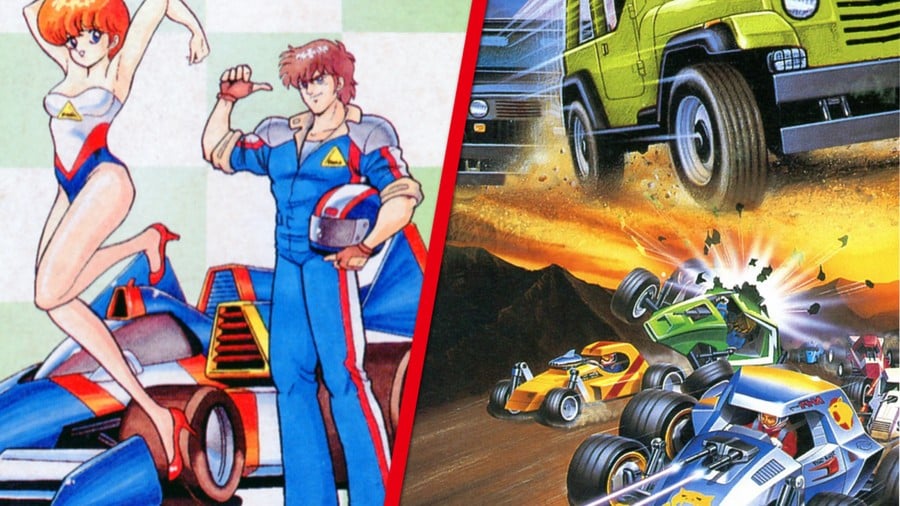
With a title like 'Dirty Racing' you might get the wrong idea about Jaleco's top-down Game Boy speed-fest, but while it does feature a large volume of bikini-clad anime track girls, the 'dirty' part of the name comes from the fact that, unlike real-world racing, it gets pretty rough out on the track. Dirty Racing was never released on its own in the west, but UK company Gremlin would bundle it together with the North American-exclusive Jeep Jamboree: Off Road Adventure in 1994 to create Race Days – complete with a new cover which buries Dirty Racing's anime stylings as deep as possible.
Ranma ½: Chōnai Gekitōhen / Street Combat (SNES)
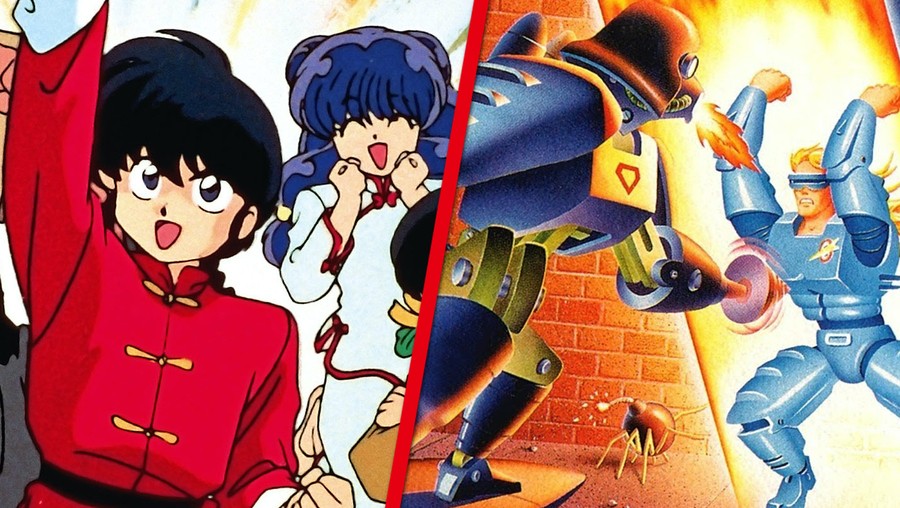
Ranma ½ is another classic Japanese manga series which, in the early '90s, gained considerable fame in its homeland, as well as several video game adaptations. The first of which arrived on the Super Famicom under the title Ranma ½: Chōnai Gekitōhen. A one-on-one fighter in the same style as Street Fighter II, it was quickly re-branded as Street Combat by Irem, stripping away the Ranma ½ characters and settings and supplanting them with some pretty atrocious and generic replacements. Ironically, one of its sequels – Ranma ½: Hard Battle – would make it to the west intact, although the box artwork was westernised slightly to remove the 'anime' edge.
Rolan's Curse II / Velious II Fukushuu no Jashin (Game Boy)
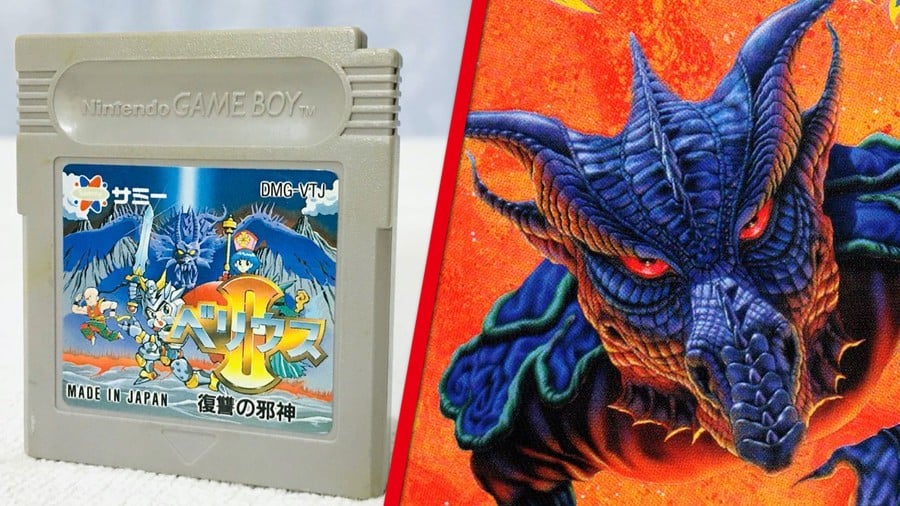
Oddly, when Sammy released its Zelda-style action adventure Velious Roland no Majuu in the west in 1991 under the title Rolan's Curse, it decided to use the original Japanese artwork – a decision it presumably regretted, as the 1992 sequel received an entirely new piece of western cover art which doesn't feature any of the cute characters contained within. Shame.
Power Moves / Power Athlete (SNES)
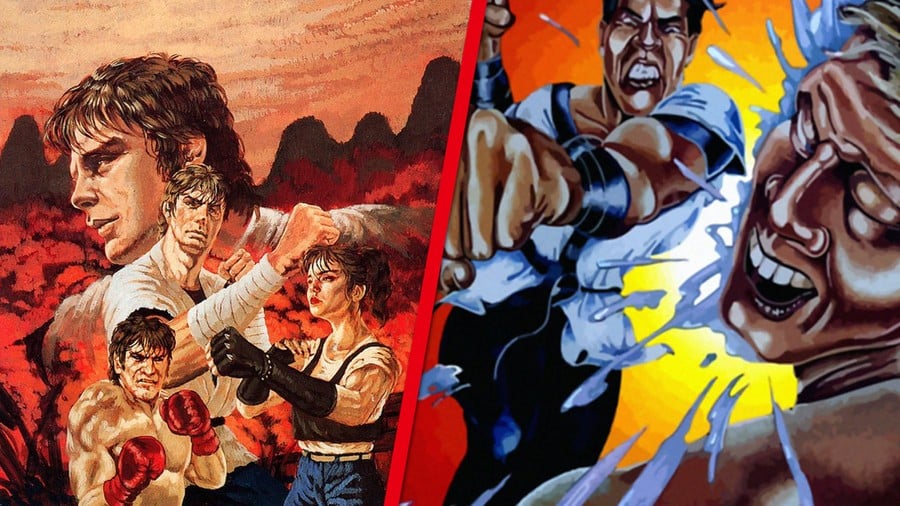
This one is a bit of a close call, as you could argue that the original Japanese cover for Power Athlete isn't particularly 'Japanese' to begin with – in fact, it looks very western in design, despite the anime-style characters contained in the game itself – but that didn't stop publisher Kaneko from binning it and instead using one of the most offensively amateurish covers we've ever witnessed for the western release, known as Power Moves. One or the worst SNES covers ever? Quite possibly.
Area 88 / U.N. Squadron (SNES)
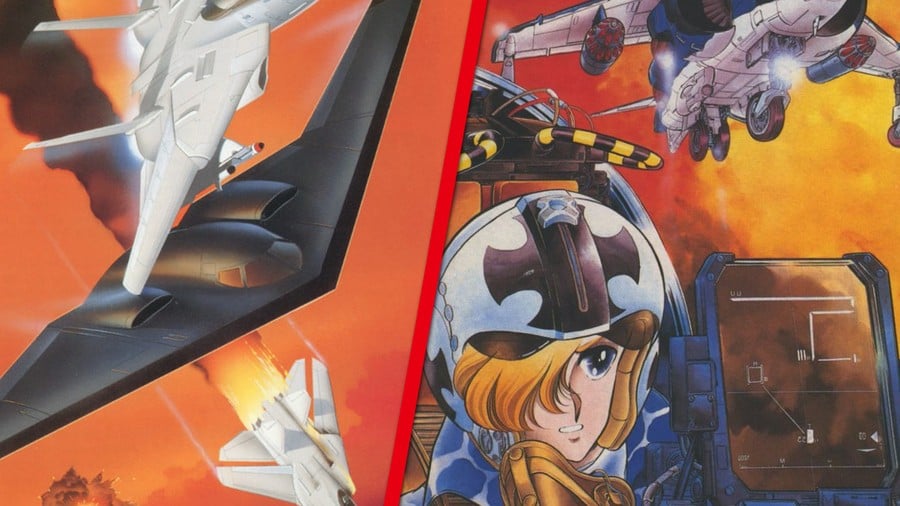
Kaoru Shintani's seminal manga (and later anime) Area 88 is perfect fodder for video game adaptation, featuring loads of real-world military fighter jets, vengeful heroes and plenty of intrigue. Capcom duly stepped up with a 1989 arcade release which was released in the west under the title U.N. Squadron – although the character portraits remained intact. The game was ported to the SNES in 1991 and is arguably one of the best shooters on the console, but it's a massive shame that the licence didn't make the trip, too; the cover to the Japanese Super Famicom version is downright gorgeous.
Assault Suits Valken / Cybernator (SNES)
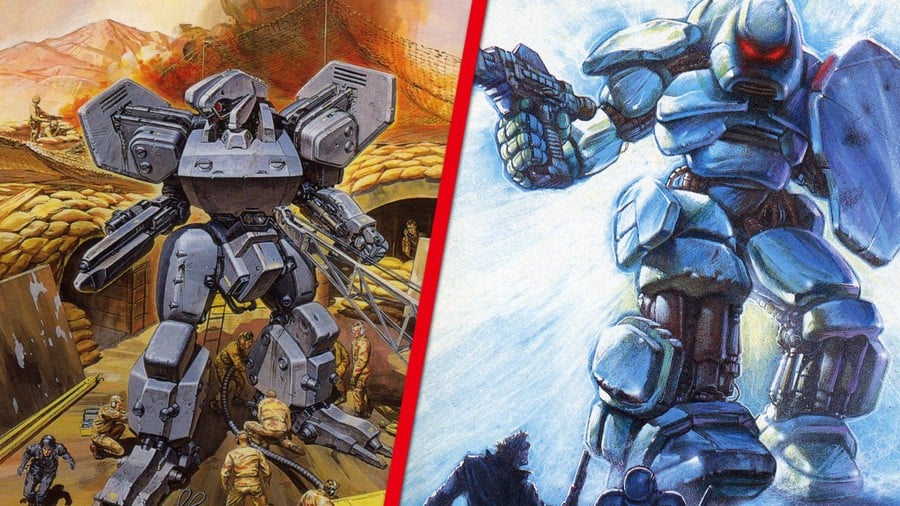
The sequel to the Mega Drive game Assault Suit Leynos (released in the west as Target Earth), Assault Suits Valken was one of the first video games that really felt like it was an interactive Japanese animated movie – despite not having a connection to any manga or anime. Blessed with character designs by Satoshi "Langrisser" Urushihara and a gorgeous cover image by Masami Ohnishi – not to mention amazing in-game visuals and tight, rewarding gameplay – it gained rave reviews at launch and was quickly picked up for release by Konami under the title Cybernator (although the game itself was developed by NCS and published by Masaya in Japan). Konami toned down the anime influences, commissioning a new piece of western-style cover art and removing the anime portraits which appear during the game's dialogue sequences. It also removed a sequence at the end where the enemy nation's president, realising they have lost the war, commits suicide. The game's promotional campaign in the west also name-checked Robocop and The Terminator, oddly trying to frame the game's human-piloted mech as an autonomous android.
Magical Hat no Buttobi Tābo! Daibōken / Decap Attack (Mega Drive / Genesis)
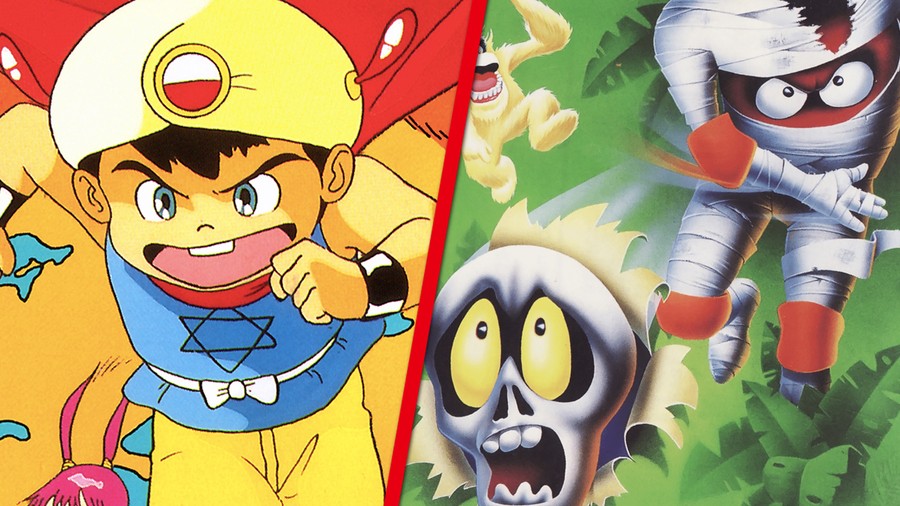
Magical Hat was a fairly short-lived TV series by Studio Pierrot which ran between 1989 and 1990, and is perhaps best known today for the excellent Mega Drive game it sired. It's arguably one of the best platformers on the console and is a semi-sequel to the equally brilliant Psyhco Fox on the Master System. Thankfully, it made its way to the west, but minus all of the anime trappings. Instead, the game was given a macabre theme, packed with zombies and skeletons, and retitled Decap Attack. It's not a bad game by any stretch of the imagination, but in losing the bright and colourful visuals of the Japanese original, it certainly feels less appealing.
Phalanx (SNES)
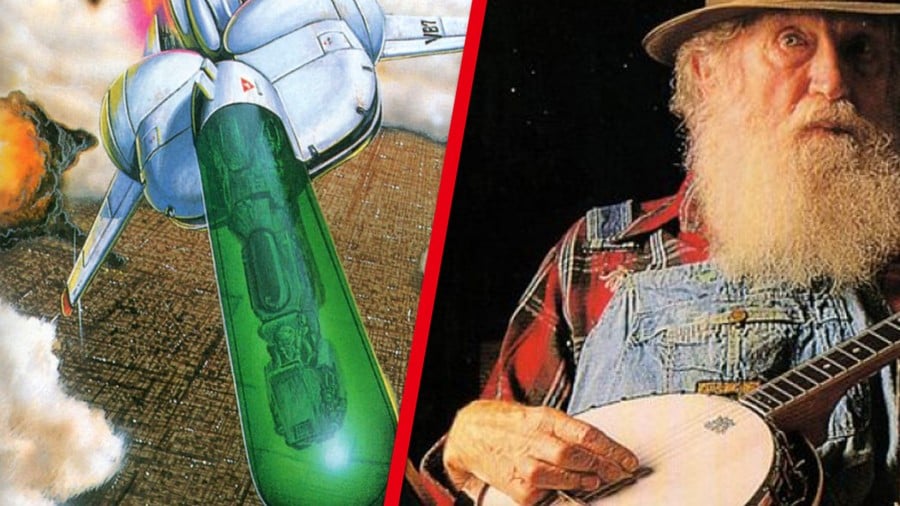
Like Power Athlete, we've been a bit cheeky here, as the cover for Kemco's Super Famicom shooter Phalanx: The Enforce Fighter A-144 isn't 'anime' as such, but it does include a very Japanese-style space ship which wouldn't look out of place in an '80s anime series with huge stomping mechs and massive floating battle fortresses. It never made it onto the western cover, which instead featured an old dude playing the banjo. Go figure! For the full story behind why this change occurred, check this out.
Do you remember any Japanese titles that were toned-down for their western release? Let us know with a comment.




Comments 137
"Anime was a mistake."
Hayao Miyazaki
Censorship still alive and well in a way.
Some of these covers are iconic--Phalanx was great because it was so left field.
More like nobody knew those series then so they rebrand them to have a chance than a "taboo".
I find it funny how people say things like Tokyo Mirage Sessions and Xenoblade 2 are anime trash yet claim things like Persona 5 and Final Fantasy 7R are the best games of all time. XD
Pretty interesting had no clue so many of those older titles were based on anime games originally.
The title of this article triggers me...
Bad Box Art Mega Man qualify for this?
@JR150 What fan of anime and/or Japanese games would say that? That's like saying sandwiches are trash, but burgers are amazing. 😳
@Obito_Sigma
That was a mistranslation, he actually said that typical anime following tropes and powerups etc is a narrative mistake
I feel like this might explain the super bizarre Mega Man 1 cover, too
Dear Nintendo Life,you've made a small mistake
under Tecmo Cup Soccer Game you've unfortunatley used the word or variations of "footballer" in the words underneath that game despite it clearly being about Soccer and not football.Just looking at for y'all .We've had this discussion before although there seems to be some some confusion generally regarding what Soccer is perhaps this is because those few people have not played Soccer before or Football but if you've ever heard of Tom Brady he is a good refrence of a Football player if you can't picture the sport in your minds.You're Welcome and Have a good night
To be an anime fan in the west during the NES/SNES days usually meant obtaining bulk amounts of VHS tapes with poorly subtitled fan translations. This actually gave a major purpose to anime-conventions, as these were the only places you would find the more obscure gems.
Of course now that services like Crunchyroll are out there, anime conventions are more just gatherings of brightly colored teens getting away from their parents for the weekend (no hate, tho)
I came in to the scene during the 56k internet days, so you technically COULD aqcuire anime easily, it would just take entire days to download (unless someone gave you a binder of burned CDs) But these days I can barely stand to watch most anime without a bad case of the cringes. I'm certain there's still some great stuff coming out these days, I've just lost the pulse entirely.
@First_Amendment Oh boy.
@First_Amendment I don't know how to reply to your comment. I just...
Ehh, forget it.
Interesting article, I think the Jetson’s SNES game was treated the same way I think.
@First_Amendment Are you kidding?
No, it's football. Not handegg.
And then it's the medieval era that gets labeled "the dark ages".😏 Captain Tsubasa and Ranma 1/2 cases alone feel downright atrocious - as, to me personally, does the very fact that something like an effin' football JRPG would have been a hard sell back in those days. Imagine how much Golf Story would have bombed if it happened in that period, then - and that's a game visually inspired by the early 90s' graphics!
Most ironic is how everything "remotely Japanese" was seen as a commercial risk in video games but outsourcing entire TV animations like the Spanish Dogtanian to Japanese studios (and I'm not talking stuff like Japanese Disney units' Duck Tales episodes - the results were explicitly animesque in accordance with what anime was like in the 80s) was perfectly fine.
Some of the anime covers are good and some I'd rather have as the western cover. It's like Dragon Quest. We all know that Dragon Quest is actually Dragonball Z but medieval era. The characters from Dragonball Z gathered all the Dragonballs and wished the world was more like fantasy and then poof, it was so. I could be mistaken but there's only a 98% chance that I am wrong.
SNES Ranma was turned into a generic American fighter called Street Combat.
@Gwynbleidd Take the Mario artwork from the NES and SNES. Even though it’s drawn by a Japanese artist, that doesn’t make it manga/anime. But there does exist Mario manga and anime.
@Gwynbleidd Technically since Anime simply means animation in Japanese all animated things of Japanese origin are anime. Westerners tend to use that term in specific ways. Same with how we don't always apply cartoon to everything. Disney calls their movies animated feature films, many series with serious themes are called animated series, but cartoon has a specific connotation. The Japanese don't really waste time doing that. They will break anime up into genres of course but that's about it. Manga is about the same although they use "comic/komiku" as well from time to time in a Japanglish sorta way.
Fist of the nord star, man did i love that anime.
Omg, get Zelda out of this Anime weirdo stuff.
Some of these are arguably better or, at least, not really worthy candidates for this pandering, sycophantic, (ironically) puritanical "RANDOM!" article, such as you tacitly admitted in the cases of Link's Awakening, Phalanx, and possibly Burai Fighter. Power Blade is not even the same game as Power Blazer, so that is an especially strange and reaching choice. Picking Black Belt is very lazy, especially since most Western Master System games at that time had that sort of "generic," "boring" cover.
Also, it's not true that most Japanese see anime as "a legitimate art form" rather than as just cartoons. That is true in some cases, but other times it is seen as childish in Japan, as well, hence the term "otaku." Weird flex.
I wonder why this article meant that this site will still do anime based video games reviews.
@The-Chosen-one I so need to check that out.
I was from the generation that grew up when many cartoons, even US productions, were animate in Japan, so the anime style has always been my preferred. In fact, Voltron was my favorite cartoon growing up. When it comes to box art, I'd say the anime style is usually better, though there are times when the western art turned out pretty well. I'd say Power Blade ended up better overall from the regional changes. Naturally, the box had to change with it.
@Ryu_Niiyama So you're saying that there is no such thing as "anime" or "manga"?
@sdelfin I remember Voltron as an kid but didn't know it was based on two mecha anime: GoLoin and Dairugger XV.
@Kalmaro What are you saying?
@Desrever How long had you watched anime in general?
@JR150 Why would you think that?
@Chibi_Manny Why is that?
@Obito_Sigma How can it be an mistake to create Japanese anime?
Not quite related, but I was into the Manga films on VHS as a pre-teen during the 90’s. I remember the likes of Akira, Dominion Tank Police and Appleseed all being great. I also have a memory of being in Virgin or Game back in the 90’s, with my Dad, who was about to purchase an 18 Rated Manga for me as they’re just cartoons, so can’t be that bad, right? We got as far as the till when a fellow Manga loving customer told my Dad that this particular Manga was most certainly not suitable for a 12 year old. Doing a quick Google search, the Manga in question was Urotsukidōji! I think that other customer saved my Dad a lot of embarrassment!
@Custom1991 That this was a form of censorship. The article mentions this as well.
@First_Amendment because football definitely makes sense for the sport played primarily with the hands rather than the sport played almost entirely with the feet. 😂
@Bass_X0 That's literally in the list lolz
Productions like Akira and Sailor Moon were already helping anime gain traction in the U.S., but there's absolutely no denying that the folks at Cartoon Network / Toonami / Adult Swim absolutely pushed it forward immensely by curating lineups with DBZ, Tenchi Muyo, Trigun, Cowboy Bebop, etc.
At least those games made it out to the west, even if some of them were badly altered. I played some of the Sailor Moon and later Goemon games on Super Famicom via emulator and I gotta say they weren't all that bad. There's little more than a snowball's chance in hell that any official Sailor Moon game (aside from a mobile puzzle game that's no longer available) will ever make it to nations where English is the primary language, but so far I haven't completely given up hope of a Goemon collection pack.
@Gauchorino "Power Blade is not even the same game as Power Blazer, so that is an especially strange and reaching choice"
The visuals and levels have been overhauled, but it's the same game. There's never been any doubt about this so I'm not sure why you're suddenly acting like there is now.
http://www.hardcoregaming101.net/power-blade/
https://en.wikipedia.org/wiki/Power_Blade
https://www.mobygames.com/game/nes/power-blade
"Picking Black Belt is very lazy, especially since most Western Master System games at that time had that sort of "generic," "boring" cover."
That particular case is to illustrate how the license was removed, rather than the cover being weaker.
@DrDaisy
There was an official French release of one of the Sailor Moon games and for some reason a copy made it to a random game rental store in Northern Germany. They also let you buy the games and my younger self immediately knew that was a once in a lifetime opportunity.
@First_Amendment - I have not seen such quality troll for some time. And I have been on GameFAQs before.
@Custom1991
Because I see it all the time? Seriously it's hilarious when you consider Tokyo Mirage Sessions and Persona 5 are from the same company--Atlus. Yet everyone calls the former "weeb grabage" while the latter is the best thing of all time despite being just as anime. XD
@Damo "The visuals and levels have been overhauled", and also the story and gameplay. So, again, how is it the same game? It even recieved a sequel (by the same developer), while Power Blazer did not. Had you called it a "reimagining", that would have made much more sense, but then you couldn't have put it in this article, I suppose.
If anime didn't exist, 87% of NintendoLife users would have no avatar photo
@Manah I remembered that. I saw a French version of Sailor Moon R for Super Nintendo. I almost said "make it outside Japan" before that occurred to me.
@JR150 who says that? I literally have never heard that
@DinnerAndWine guilty
@JR150 I does have way more fan service proof underage girls so that's probably why. Still a good game
@Gauchorino The gameplay is the same, it's just the controls and level designs that have been tweaked. But anyway, neat way to ignore the point that was originally being made here - that even after Taito had improved the western version, it didn't stick with the anime-style robot hero and instead used an Arnie-style protagonist clearly designed to appeal to western audiences.
There was a Dragon Ball game on the NES?
@JR150 There's no reasoning with hypocrites unfortunately.
With most of these the Japanese box art is superior, but Phalanx definitely got an upgrade.
I am not big on anime but Ranma 1/2 is one of the best comedies there. For me it is like the Anime equivalent of Friends.
I was big into anime and imports back in the SNES/PC Engine era. Had a lot of great titles. It’s so much easier these days, which makes it a little bit less fun
I must admit I do kinda look down on anime fans. I guess these days they come across as kind of weird and share many similarities with neo nazis and incels. I think their Venn diagrams overlap a lot. All you have to do is spend any amount of time on forums or social media and notice the people with Japanese cartoon avatars are thoroughly uncool people.
I guess it doesn’t help me that the two people I went to school with that were into Japanese cartoons turned out bad. One of them dated a friend of mine, I’ve often been tempted to post this story with his name included as he does work as a games tester in the UK. Anyways he beats his girlfriend up. When we challenged him about it he moved to another city. She’s really shy and just does as she’s told by him. God I hate him. And the other guy turned into a gamer gate supporter (I mean so did the previous guy) but was really extreme with it and engaged in doxxing, made death threats and the like.
Personally I’ve always thought the exaggerated expressions and split frame rates appealed to people with hindered social skills. There was a study a while ago that said people pay attention to video that operates at varying framerates - like smooth 30hz background and CG stuff with 12fps hand drawn animation, appealing to people with ADHD. So when you think about it you can see why some people are fanatics for Asian cartoons.
Honestly it has always been a niche scene in the west, it's just that it's a much bigger niche now than it used to be.
@Custom1991 I knew Voltron was Japanese in origin, but I didn't know what the original Japanese titles were until the late 90s. And I didn't get around to seeing Golion until ten years later, and Dairugger in 2016. I enjoyed them both quite a lot. Dairugger surprised me in how good I thought it was, but my expectations were also lower.
@Damo You're continually moving goalposts, so your "point" keeps getting further and further away from where you originally insisted it to be. And no, the gameplay is not the same. The boomerang moves further and the character jumps higher, which makes for different gameplay. Similar gameplay, and based on the same engine and framework, but not the same. The story is also different, which you're neglecting to acknowledge. Again, these make your use of these two games for this article reaching.
@Custom1991 I don't understand your question. Anime means animation. Manga is used for the still drawing/comic format.I never said that they don't exist.
@Gauchorino Sure. 😉
I was surprised when I found my copy of Ranma 1/2 Hard Battle several months ago that it was actually legitimate and not a repro cart. The box when I looked it up even mentioned manga so it really must've started to get more mainstream at the time.
What's weird about Tecmo Cup Soccer Game is that Tecmo made a more typical soccer game that contains 75% of the same words in the title, Tecmo World Cup Soccer, which was only released in Japan and PAL regions. Which I'm sure has confused some collectors. (I suppose perhaps a bit less in Europe as I think the Tsubasa-based game did change the word Soccer to Football for the PAL version. Or was that the Mega Drive port that may not have been officially released?)
When Western peoples used to be saw & treated Anime and Japanese stuffs like a L'Cie...
I didn’t see the second page until just now.
@Woomy_NNYes I hope you realize Britian is more than just England but maybe you'll read more about it or visit there one day and see what I'm talking about.And lastly I'm not convinced you know the history of Soccer very well for you to say all that incorrectness you just did.But Either way I wish you the best to hopefully one day understand Britain and Soccer.
Somewhat limited meaning of "westerner". Dragon Ball, Saint Seiya, Fist of..., Captain Tsubasa, Sailor Moon, Ranma 1/2 ... were all hits in Spain only a few years after they were relased in Japan, to allow for translation and so on. The cool kids would bring import magazines to the playground to show the plots of the upcoming seasons.
Videogame magazines would show pages and pages of unreleased (in europe) manga games, indicating wheter they had any hope of being brought over. The Dragon Ball rpgs on the nes and snes were legendary.
@First_Amendment I am in the US, and while I may fudge the lines of Brittian, UK, England, Ireland, the point is, they say football, not soccer. I wasn't trolling you. Your comment implies you didn't know they call it football. As a fellow NL user, forgive me if I totally misunderstood. I saw others trolling you, but that wasn't my intent. My comment wasn't putting you down.
If you came here to troll, you likely won't be around Nintendo Life site for long.
The western opposition to anime, old or new, is something I am simply not tolerant of. I do not respect you or your opinion if you are of the mindset of "eww anime, I hate that crap!" automatically.
If you're going to treat something I love so crassly, I'm going to return the favor.
Didn't this also happen with Dragon Quest/Warrior?
Anime is still banned in my household.
@First_Amendment Dear First Amendment, Your comment is so awesome I had to read it twice. I admire your gusto and enthusiasm. You have won the internet (at least for me) for the day.
Good day to you.
I love Burai fighter and I have to admit I never actually knew about the drastic cover difference. Pretty cool. Western box art definitely had a weird thing against being remotely Japanese at one point, a good example being Hammerin' Harry which had a ridiculously angry hammer-guy on the front in the west and a more chill anime character in Japan.
Don't forget Prince of Persia on the SNES.
@Obito_Sigma He never said that or even remotely indicated that.
It is kinda interesting how culture importing helped and/or restricted early gaming. I grew up thinking the Japanese had the better library for the snes due to all the region locked games. Also since many licensed games were decent in the 90s I was devastated at the amount of games I legally missed out on. But when there is dialup there is a way...I think I spent half my childhood getting yelled at for tying up the phone line all night.
Hm. Is this also the reason Puyo Puyo was changed into Mean Bean and Ghost Trap?
@DinnerAndWine Hahah....... Maybe.
@shonenjump86 That one was actually a reverse example; it was a Jetsons game first and then later converted into Yokai Busters for Japan.
@Desrever Nah, you could get official dubs (some of which were pretty good) on those VHS tapes in the 90's. Alternatively for many anime, you just had to put up with edited dubs while watching episodes only when they aired on Cartoon Network or some other channel. If you couldn't make it for an episode, your only options were to awkwardly arrange in advance to record it on a VHS tape or wait for the entire arc to be re-aired, as there were no streaming services, Internet downloads (not for anime, anyway), or DVR back then. I'm starting to feel old.
@Ryu_Niiyama Yeah, the exact definition of anime is any animation of Japanese origin, although it's amazing how many people don't get that. If it's a Western cartoon with a lot of anime influence, it's anime-esque but not true anime.
Personally, I define cartoons to be animated TV series, while movies are, well, animated movies.
You are missing the creme de la creme of terrible "Westernized" covers. Don't get me wrong, these are great, and most I hadn't seen before, but you can't really do this piece without adding Mega Man.
Also, my personal favourite things to needlessly fuss about, the Breath of Fire 1 and 2 box arts.
@Seanmyster6 oh, I see. Didn’t know that.
@First_Amendment This is a British site, colonist.
People play football here with their feet and a ball, not hands and an egg. And the game isn’t turn based either (American “football” is the second dullest sport ever; the first one is baseball).
@Kalmaro Aside from the suicide scene in the mecha game it’s not really censorship, just marketing. None of the licensed things here were controversial or banned in the States, marketing teams just decided they wouldn’t sell.
Anime was very niche in the 80s and 90s and it wasn’t until Pokémon that it took off. Even Sailor Moon was supposed to have an American version, with new animation and live action footage!
@RogerFederer Isn’t the French dub of Fist of the North Star kinda ridiculous though? Like they tried to make that violent anime into a kids show and went Samurai Pizza Cats with it?
@SmaggTheSmug Not according to the DragonBall one with Master Roshi. That looks like censorship.
Any anime I like I like despite it being anime.
I know very little about anime, but I feel like there are different levels of anime. I enjoy things like dragon quest (long time fan) final fantasy, and Zelda. But the styles like xenoblade, SMT and Persona are a little too much for my taste. That said, the gameplay of P5 made up for it.
One of the strangest examples I can think of is Pocky & Rocky. The U.S. box art is typical "totally re-design the characters to remove any Japanese influence"... yet the actual in-game graphics retain the Japanese designs. I can only imagine a kid in 1993 buying the game and being confused at the obvious disconnect between the packaging and the gameplay.
Hey Nintendolife, thanks for the article I enjoy these types of write ups. I have one criticism when you guys do these sorts of things any chance we could get more related images? In a feature like this I appreciated the varying covers but would have loved to see game play images illustrating the difference in sprite work it would have helped this immensely as now I am searching the internet myself in order to understand the changes they made to these game’s.
All in all a great article but if we could get more images like a magazine feature of old.
This popped up right as I was looking for Anime and Manga at half price books.😂
Not big into anime now but I Watched yu gi oh , Pokémon & bey blades when I was a kid
Better anime than western media any day.
I'm just glad companies got over their fear of Japanese culture. At least the switch isn't a horror like the American SNES and we can enjoy animes in the west without censorship so extreme it changes the entire story. Looking at you France and the Club Dorothée. Because of you, part of my childhood was a lie.
@EVIL-C Oh, I HATE standard Sandwiches, Subs the way home, but like burgers!? IDK I also feel that way with the BOTW's more painted looks. There great games, but the visual style is just not for me. I would have far preferred more of an Anime style but it's fine
I remember when China town was the only place to see manga. Then sailor moon got popular and things started to change. Shaman King manga was sold at regular book shops.
While I agree "anti-anime" is what's going on when IPs are simply removed, changes in cover art is just good localizing.
Unless you have the resources to get a firm to design common aspects and branding so you can have similar covers in more then one country, it's simple a best practice to have a local artist make the cover from scratch.. It is CRAZY easy to unknowingly include something really offensive if you just use the same picture or even give one picture to an artist as a guideline.
In the same vein as Hokuto no Ken listed above, there were two Sega games based on the manga Kujaku Ō (Peacock King) that had their licenses dropped in the west — the Master System game became SpellCaster, while the Genesis game became Mystic Defender.
Also, Mashin Hero Wataru on TurboGrafx became Keith Courage in Alpha Zones, and in a reversal, the NES game Shatterhand was changed into a Tokkyuu Shirei Solbrain tie-in when it released in Japan.
@JR150 FFVII Remake is stunning, Persona 5 oozes style. Xenoblade 2 just looks Ok, not bad but only a level above a tales game.
I think both Tokyo Mirage Sessions and Xenoblade 2 also paddle into Japanese weirdness deeper than FFVII Remake, and not in a Yakuza tongue in cheek way. That makes them have less mass appeal.
“Anime was a mistake.”
-some famous anime guy
And now westerners are imposing their own cultural values on anime and are upset when Japan tells them “no”.
its fine , let them miss out on the fun .
Perhaps we should first all be on the same page in regards to what being an “anime” means.
https://youtu.be/u56Y9ZknT4k
Fisting of the north star! Best anime ever.
Action packed, from the beginning till the end.
I don't exactly "hate" anime, but I am incredibly tired of 99% of people taking heavy influence from it for their works, especially like Smash fancomics or animation
So that's why I'm opting to take inspiration from G.I. Joe instead for one of my two planned Smash fic universes
I didn't know that about the Dragon Ball game, and plenty of other surprises for me too. Nice article.
@LatsaSpege My point was that burgers and sandwiches are the same idea, a filling between two pieces of bread, but prepared and assembled differently.
I prefer anime style than Western style.
Anime style is my drawing style also.
Watching anime, reading manga and playing every jrpg that comes West has took up pretty much all of my spare time over the last 10 years, and even got my partner into. There's something about Japanese animation (not just the ti**ids) that just fascinates me and the fact it covers themes that western animation don't touch on and are mainly for adults and more mature, yet all the adult animation from the west are all American comedies.
"No anime please, we're Westerners"
Is that Sony's new slogan? 🙃
What did first amendment say?
@DK-Fan
No way, jose. I have a dark embarrassing secret: there once was a time I was into anime. Circa 80’s to early 90’s in the US. Anime/Manga style artwork was always scrubbed (pretty much as a rule) from covers and marketing material. Americanized artwork (generally poor due to budget) was the white wash prescription of the time. The juxtaposition was quite obvious since this mostly applied to Japanese video games, manga and anime.
@Wargoose
FF7 R looks like a generic military style game with anime characters to the untrained eye, and P5's style is just too much red with awkward font for my taste.
Agree to disagree. Art is subjective at the end of the day. I prefer Xenoblade 2's massive landscapes and orchestral music and TMS's lighter, poppy style because it makes use of loads of colors. Not just red white and black.
I had Power Moves on the Genesis which was called Deadly Moves. I am guessing Nintendo didn't like the word Deadly either.
I still Blast through Cybernator once a year, one of my fave SNES games along with Secret of Mana. As for Anime, I was watching Battle of the Planets and Robotech (cable late 80s) and later in the 90s Channel 4 put Guyver and some others on at 3-4 in the morning. I think Anime lost it's luster for me after watching Akira and being thoroughly dissappointed. I was a hard to please teenager ha. I watched EVA and Ghost in the Shell but neither really swayed me.
@KryptoniteKrunch considering they bought both funimation and crunchyroll I doubt it, seems at the moment its only the PlayStation division of Sony that care about censorship
@Tasuki Flashback on SNES changed the Death Tower to the Cyber Tower, on that note.
@Heavyarms55 There's tropes within it that really bug me but I still love Japanese animation regardless.
Things like Akira and the Ghibli movies are what I want to see more of in the States.
@UltimateOtaku91 "yet all the adult animation from the west are all American comedies."
And yet there's some gold like Ralph Bakshi's Lord of the Rings and Fire and Ice
I always preferred anime to American stuff as a kid.
There were also very, very few gems from Europe that had made it to Australia. The main one that springs to mind is The Animals of Farthing Wood, which I would love to own on Blu-ray/DVD. It was bleak and so far removed from the "kid friendly" garbage that we see today.
I loved shows like Farthing Wood and Sailor Moon precisely because they were the antithesis of what be imported from the States.
Battle of the Planets was a huge deal when I was at school. Don’t think there’s any Gatchaman games tho which is very surprising.
@The-Nate they were from 70's and 80's though, it's all comedies now like American dad, Rick and morty, family guy, simpsons, South Park and Futurama
Ah, yes, back when anime wasn't oversaturated with "cute girls doing cute things" premises or fanservice up the wazoo that all the neckbeards and incels living in their mom's basement get off to.
Regardless, there are some wonderful games out their based on Japanimation. Jojo: Heritage for the Future is, in my opinion, probably the best fighting game that Capcom ever produced.
@Silly_G I will agree: Most kid stuff today is absolute garbage here in America. "Pssh, who needs good writing and jokes when we can just pander to kids?" is basically the way of doing things now.
Mario is Japan made...don't see any issues there...
I remember playing DBZSB2 on my SNES when a friend brought it over with an adapter and really enjoying it despite not knowing what the hell was going on. It's a shame companies assumed American gamers had such low opinions for anime style back then. I personally would have been happy to play Dragon Ball Z Super Butoden 2 and the Sailor Moon games out here in America in English. At least America got a few anime-style games like Kendo Rage, Legend of the Mystical Ninja, Ranma 1/2: Hard Battle, Pocky & Rocky, Extra Innings, and some of Valis games during the 16-bit era so that's something.
I LOVE JAPENESE CARTOONS
Whoever was doing this article must've been drunk. First two games have the same 'structure', that is:
Japanese title/English title
Japanese cover/English cover
Then suddenly Tsubasa drops in, where titles are in reverse, but not the cover art, making it look weird.
Then we go to Link's Awakening where for some reason we have English Cover/Japanese Cover, swapping art around.
Is it minor? Maybe. But for someone who never saw any of Street Fighter 2 cover art I for example don't know which one is Japanese and which one English. If it was only one random occurence? Then I can assume left is Japan right is English. But first, Link's Awakening, which has same title/license is the only one who swapped art so far, and looking lower Area 88 also has swapped covers.
Is it that hard to STICK to a design and not make it completely random as article goes?
Is isn’t just nostalgia that makes me prefer the Western Zelda boxes! I love the art itself, and on a poster or in a book it’s superior. But I love the mystic, minimal styles of just the name, font, game specific sword/shield/details against a start backdrop. It stands out and looks classy among other game boxes, evokes a real sense of mystery and adventure I don’t get from the artwork.
@Obito_Sigma the BEST mistake EVER tho uwu XD
Tap here to load 137 comments
Leave A Comment
Hold on there, you need to login to post a comment...